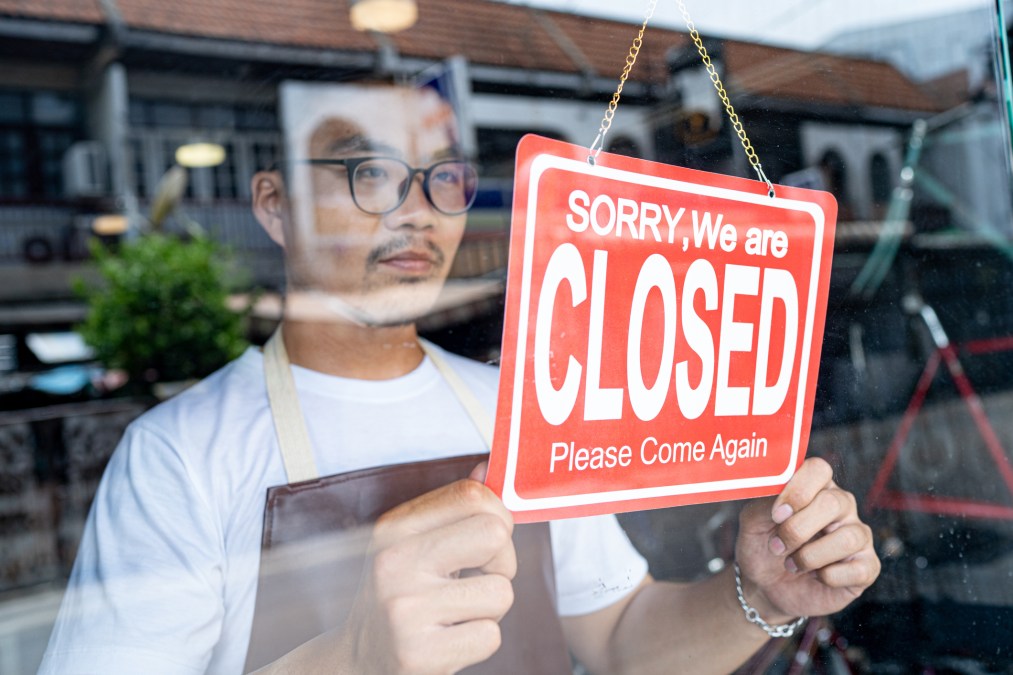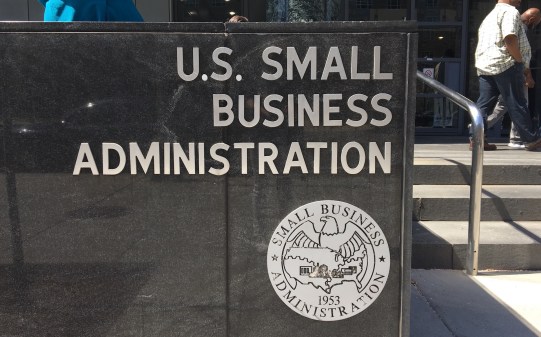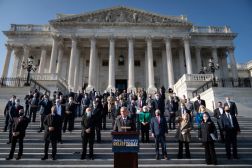SBA loan system woes may persist with more stimulus legislation likely

The Small Business Administration’s loan system struggles may persist because the agency is having to adjust business rules to expedited coronavirus stimulus legislation.
Lenders applying on behalf of small business clients for the second round of Paycheck Protection Program (PPP) loans on its E-Tran system saw it time out multiple times Monday.
The separate, bulk submissions, consisting of 5,000 applications minimum, that big banks favor worked better.
“You have very fast-moving legislation, and then there’s a lot of interpretation that’s going on,” Marty Puranik, CEO of cloud hosting company Atlantic.net, told FedScoop. “SBA has a lot of challenges because it’s having to do things it’s never done before.”
While SBA quickly stood up a portal for PPP — which provides forgivable loans of up to $10 million to keep small businesses’ workforces employed during the pandemic — part of it either isn’t working or being overtaxed, Puranik said.
SBA did not respond to a request for comment on the cause or extent of E-Tran’s issues.
Smaller lenders and fintech companies like PayPal successfully used E-Tran to apply for loans for the initial $342 billion in stimulus funds made available to small businesses, while big banks took longer to set up their systems because of how quickly PPP was introduced.
In response, SBA attempted to introduce a pacing system — limiting lenders to 350 applications an hour on E-Tran — for the second round of $310 billion in PPP funds released Monday. This time big banks were the beneficiaries of system issues, Puranik said.
“Our member banks across the country are deeply frustrated at their inability to access [SBA’s] E-Tran system,” tweeted Rob Nichols, president and CEO of the American Bankers Association, on Monday. “We have raised these issues at the highest levels. Until they are resolved [America’s banks] will not be able to help more struggling small businesses.”
While smaller lenders and fintech companies fared better during the first round of PPP, that meant the loans skewed toward wealthy, private client groups and large companies — not small businesses using major banks.
JPMorgan Chase & Co.’s average loan was valued at about $500,000, and the Los Angeles Lakers received a $4.6 million loan, despite being valued at $4.4 billion and only 45% of Los Angeles County residents being employed. The NBA team has since returned the money.
“Virtually no small businesses got any loans,” Puranik said.
A better process might be for SBA to accept all loan applications and then make awards via a lottery, or else a reverse lottery where portions of the pot go to employers with certain ranges of employees, he added.
SBA will need to work out the kinks with E-Tran because PPP will only fund businesses for about two months.
Part of PPP loan forgiveness is that small businesses must hire employees back, but some workers might not return if they’re making more on unemployment and the coronavirus is still a threat to them at, say, their restaurant job. In that situation the business could become burdened with the low-interest loan, unless future stimulus legislation forgives loans if businesses merely remain open or retain a certain amount of employees, Puranik said.
That means more work for SBA, and there’s also the Economic Injury Disaster Loan (EIDL) program to consider. EIDL also received stimulus funding and was originally intended to be a $10,000 loan for applicants, but SBA interpreted the law to mean $1,000 per employee for up to 10 employees — meaning the smallest businesses won’t receive the full amount.
“The little guys have the least margin for error,” Puranik said, and every adjustment changes portal business rules.
Crashes haven’t been that portal’s only issue, as earlier this month personally identifiable information from about 8,000 EIDL applicants was potentially exposed, according to SBA.
SBA disabled the portion of the website at issue and relaunched the portal. But the cause of the problem, data exposed and length of time it was available were unclear.
“Nobody’s claiming to have all that data out there,” Puranik said. “So I think they were just releasing that as a government agency, which in a way if that’s what happened, that’s great they would be forthcoming because in corporate America it’s usually the other way.”





